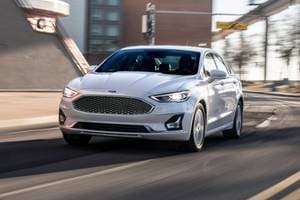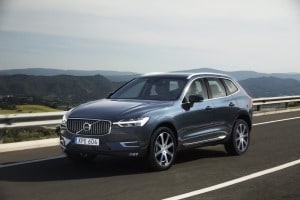Know Before You Buy
Market Segment
Electric vehicles range in size from diminutive two-seat city runners such as the Smart Fortwo all the way up to full-size luxury sedans and SUVs such as the Tesla Model S and Model X, respectively. Most, however, fall within the lines of compact or midsize sedans or hatchbacks. Some EVs, including the Ford Focus Electric and Volkswagen e-Golf, look identical to their gasoline-powered counterparts. Others such as the BMW i3, Nissan Leaf and the Tesla models have distinct designs.
Price
Electric vehicles can cause sticker shock. Many list at prices that rival fully loaded midsize sedans, and EVs based on existing models can cost several thousand dollars more than their gasoline counterparts. EVs aren't manufactured on the scale of conventional cars, and parts and components cost more to source and produce. The federal and state governments help ease the consumer burden, however, because most EVs qualify for specific credits or rebates that lower prices to more attractive levels. Ultimately, buyers trade higher upfront costs for lower running costs over time.
Performance and Range
Electric cars all share a distinct trait: instant, powerful acceleration. Gasoline cars, no matter how sporty, exhibit some lag from a stop. Though EVs differ in their top speeds, all share a similar rush when the accelerator is pressed.
An EV's range — the distance it can travel on a full battery charge — is largely determined by the kilowatt-hour (kWh) capacity of its battery pack. The higher the kWh capacity, the farther an EV can travel. Today's battery pack capacities span from 16 kWh to 100 kWh, delivering traveling distances from 60 miles to 315 miles on a full charge.
Safety
EVs include the same safety features standard on nearly all cars today, including antilock brakes, stability control, front-seat side airbags and often additional airbags such as full-length side curtain and driver knee airbags.
Electric vehicles perform as well as their gasoline counterparts in government and insurance industry crash testing, and officials believe battery-powered cars pose no greater risk than gasoline-powered cars for fire or other perceived electrical risks.
Features
Although EVs can induce sticker shock, many come loaded with conveniences you might not find in a comparable gas model. Features including automatic climate control, heated seats, smartphone interfaces, navigation systems, Bluetooth capability and premium audio systems often sweeten the deal and make an EV's list price more attractive.
Charging Time
Overall charge time is affected by two things: the charge rate of the EV itself and the power of the system it's plugged into. The charge rate of EVs range from a slow 3.3-kW rate to the blazing 10-kW fast-charging rate found in the Tesla Model S. There's an even greater disparity between power sources. On the low end there's your basic household outlet. On the high end there are Tesla's supercharger stations. The public charge stations you see in parking lots fall somewhere in between.
Roominess
Most electric vehicles seat four or five people, similar to most compacts or midsize sedans. Exceptions include the Smart Fortwo two-seater and optional third-row jump seats for the Tesla Model S that allow it to carry up to seven passengers. Without an engine up front and slim battery packs that span underneath the floor, EV cabins often feel roomier than conventional cars.
Cargo Space
Although it depends on where the batteries are positioned in the vehicle, electric cars often have similar, if not more, cargo space than their gasoline counterparts. The space reserved for engines, in fact, often becomes a front trunk (sometimes called a "frunk"), offering additional room for luggage, groceries and small-item storage. Although EVs can yield more passenger or cargo space, payload capacity — the total weight that the car can carry safely — can still be an issue.
Cost to Own
The whole transaction of electric vehicle ownership involves higher cost up front for lower running costs over time. With many variables involved, this can be a complicated equation for most buyers. Although you won't be buying gasoline, your electric bill will rise if you charge at home. If you charge at work or at a shopping center, for example, you'll often need an account to access electricity from a third party, not unlike a gas station credit card. Most EV buyers will want to consider installing a fast-charging station at home to minimize time on the plug and to take advantage of overnight, off-peak-hours charging.
When purchased new, most electric vehicles will be eligible for a federal tax credit of up to $7,500, depending on the owner's individual tax situation.





